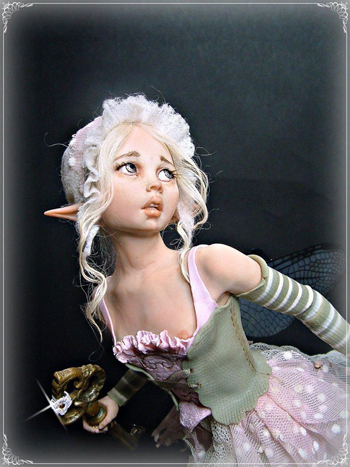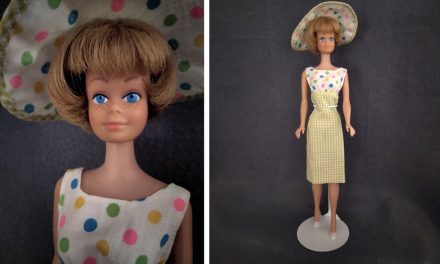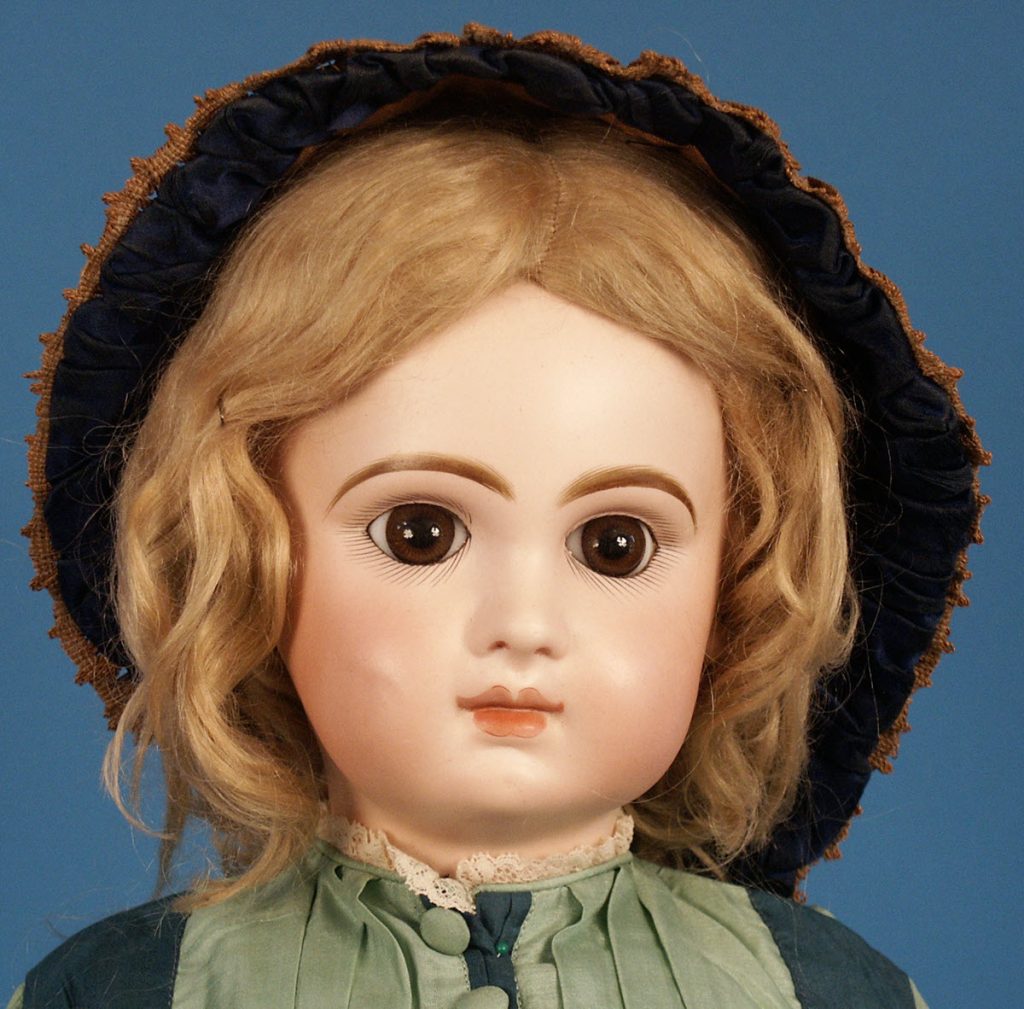
By Jan Foulke
Q: I have been saving my money to buy a French closed-mouth Tête Jumeau doll, and I’ve looked at quite a few. One that I really liked did not have the usual red Jumeau stamp on her neck, but the seller said she was a Jumeau anyway. She did have the blue-and-white Bébé Jumeau sticker on her body, and her face looked like a Jumeau. But I wonder about the head. Could you give me some advice about this?
A: Jumeau bébés are favorites with collectors, and just one glance at a beautiful Jumeau face with its large expressive eyes can show you why. In the nearly 60 years that Maison Jumeau was in business, there were different periods of production designs. The period of the Tête Jumeau dolls was the longest, ranging from about 1885 until 1899, when Jumeau joined the SFBJ and ceased to be a separate business.
The Tête Jumeau period was the most prolific, too, so they are fairly easy to find. Since doll prices have gone down over the past five years, they have become much more reasonable, too, and you can now buy a very nice example of a closed-mouth Tête for about $2,200 to $3,200.
Early Jumeau dolls were marked only with a size number, but by about 1880 dolls were being incised with a trademark, and by the mid-1880s they were being stamped in red with the easily recognized Tête Jumeau stamp. The complete stamped mark is “Déposé Tête Jumeau Bte SGDG” with a size number starting with 1 for a 10-inch doll, and going up the scale. A 30- or 31-inch height would be a size 13.
Jumeau not only had a doll factory, it also had its own porcelain factory after 1872, so at the time of the production of the Têtes, they could make their own complete dolls. Having a porcelain factory meant that they could also earn extra profit by producing heads for other dollmakers or by selling their own heads to other makers, and that is what they did. So sometimes you will find Jumeau heads that are unmarked because they were sold to other producers.
Sometimes these other producers had the Jumeau factory put a special trademark on the heads, but not always. Quite a few department stores had Jumeau make dolls for them, which they sold under their own names. Jumeau actually advertised that they sold bébés without the Jumeau trademark at 40 to 50 percent off regular prices, but still the same quality. Some of these heads will have a white spot on the back where the red stamped mark was removed. Some also have the so-called “Jumeau checkmarks,” which were likely artist signings or quality-control marks. The checkmarks can also help to verify the authenticity of a Jumeau head, as it was the only company to use them.
If you are buying one of these unmarked heads, first be sure that it is a Jumeau mold. The Tête Jumeau face is quite distinctive, so after a lot of looking, you should start to recognize it, even if it’s not marked. For a beginning buyer, it is probably much more comfortable to buy a doll with a marked head. Then you can be sure you have a Jumeau, and when you go to sell it, there will be no question about authenticity.
When buying a Jumeau, you also want to make sure that you get a head with the right body. For a Tête head, two marks were used on the body. At first, they were stamped on the back torso in blue “Jumeau Medaille D’or Paris” and later in the production period, after about 1890, they carried a blue-and-white “Bébé Jumeau Diplome d’Honneur” sticker. Because the blue stamp was used on Jumeau bodies before the Tête era, you want to be sure that the body is the correct style to match the period of the head, as the earlier bodies had a different style, but the same mark as the later bodies. The correct body for a Tête is the type shown with attached ball joints, jointed wrists, and slimmer torso, although some may still have been made with unjointed wrists.
It is also a good idea to check that the hands are original, as the paint tends to crack and chip, and over the years they may have been replaced. Fingers should be separate and dainty, with index and fourth ones slightly raised. Of course, sometimes you will find an unmarked body. If so, examine it closely to be sure it is a Jumeau body. It should be exactly like the model illustrated.
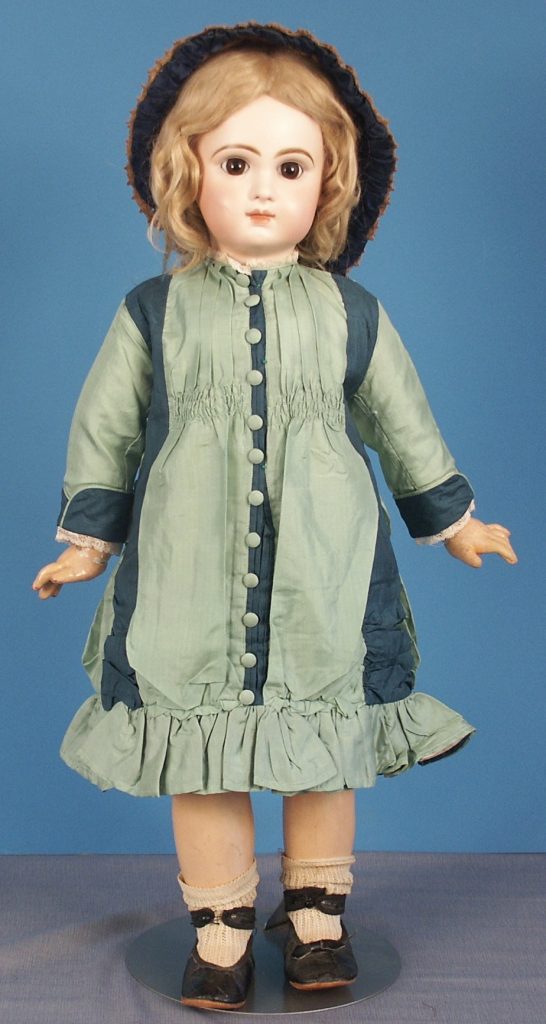
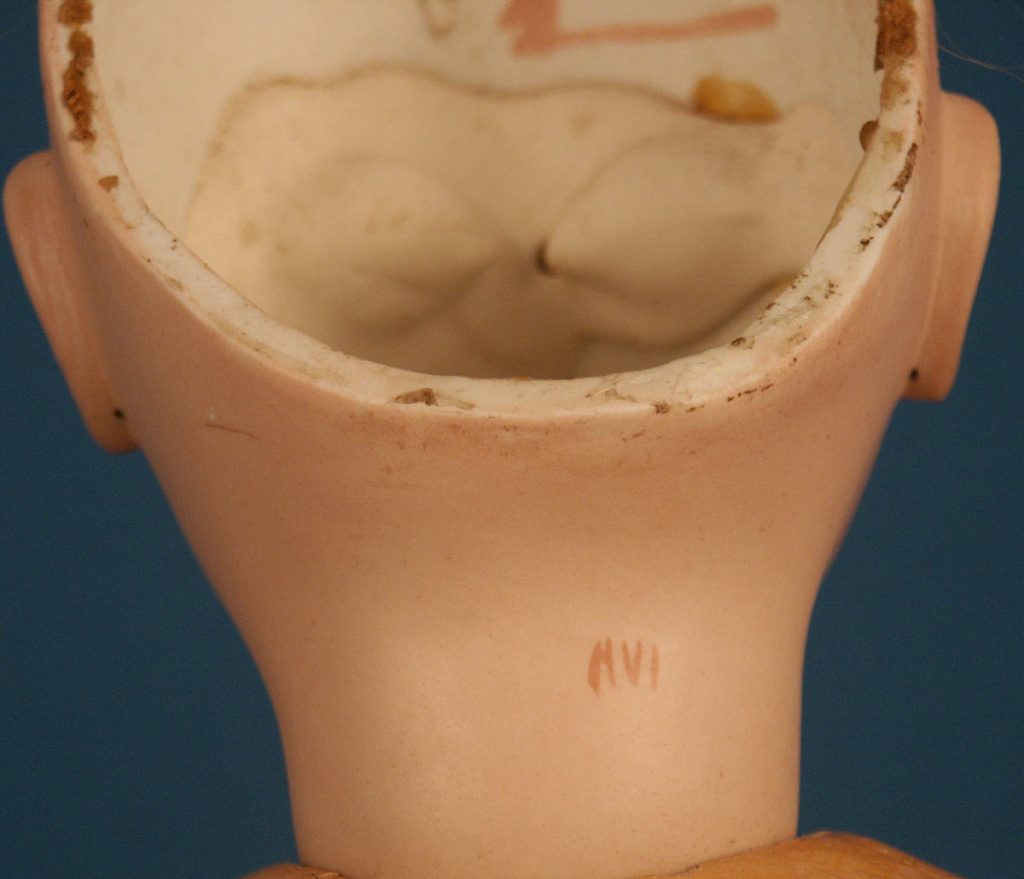
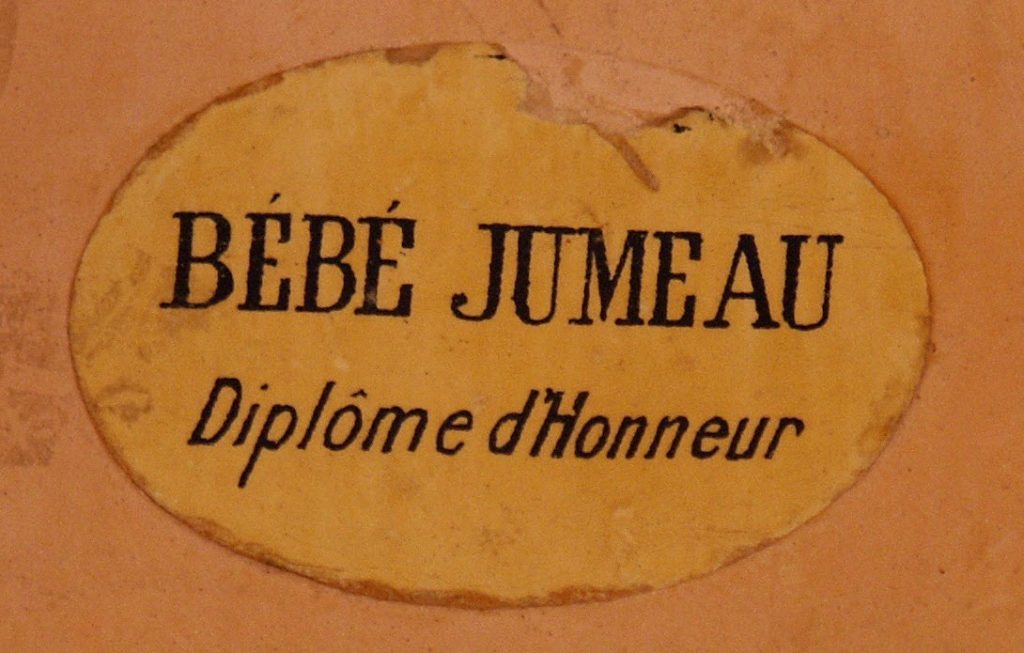

If you would like to find out more information about Jumeau dolls, consult “The Jumeau Book” by François Theimer and Florence Theriault. Good luck in your quest. I know you will find a marvelous example!
Jan Foulke (retired) is an authority on antique and vintage dolls, with over 40 years of experience in the field. She’s the author of the full-color reference book “Jan Foulke’s Guide to Dolls.” Subscribe now to read Foulke’s columns in DOLLS online archive of past issues!

